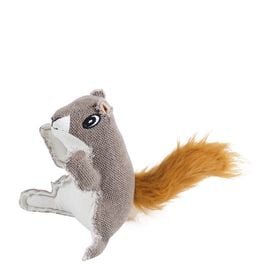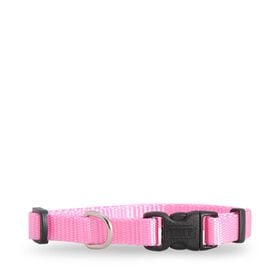A favourite of many celebrities and appearing in several children’s cartoons, the Chihuahua is one of the most recognized dog breeds in the world. But what do you really know about this breed? The following is some useful information on this adorable little pooch.
Physical appearance of the Chihuahua
The Chihuahua is the smallest known breed of dog, measuring 6 to 9 in. (15 to 23 cm) at the shoulders, and weighing 4 to 6 lb (1.8 to 2.7 kg). There are two different coat types for this breed: the long coat and the smooth coat. The Canadian Kennel Club, however, registers them as two distinct varieties, but allows puppies born as a result of mating between longhaired and shorthaired dogs to be registered as purebred, according to the puppy’s coat. Chihuahuas are characterized by a well-rounded apple-like dome skull, erect ears, a short muzzle and large but not bulging eyes.
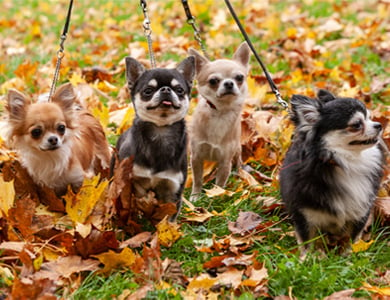
Their coats come in black, black and tan, blue and tan, chocolate, chocolate and tan, cream, fawn and white, and red. Coats that come in these colours can also have such markings as brindle, black mask, sable and white spots. The colour merle is considered a genetic defect and is even a criterion for disqualification at dog shows. In short, it should not be bred.
The terms miniature Chihuahua, toy Chihuahua, mini Chihuahua, teacup Chihuahua, dwarf Chihuahua and tiny toy are used by people who often command high prices for these puppies. It is important to remember that these designations are not recognized breeds and are used as a marketing tactic. These dogs are generally too small and often subject to health problems.
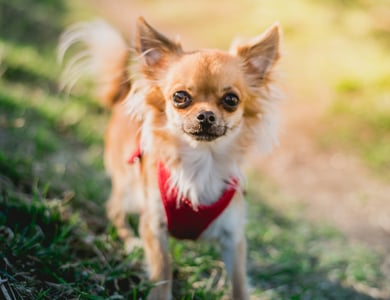
Life expectancy and health
Like any breed, Chihuahuas are subject to a variety of health problems. The most common include hypoglycemia (especially in puppies), teeth issues, obesity, eye problems, collapsed trachea and patella luxation. Moreover, Chihuahuas, like other toy breeds, can be affected by hydrocephalus. Chihuahua puppies with hydrocephalus have an abnormally large head, are lethargic and do not grow at the same rate as their siblings.
At birth, Chihuahuas can have moleras, or a soft spot in their skulls. This characteristic makes them the only breed of dog to be born with an incomplete skull. This is not a defect; it is a normal adaptation facilitating the passage through the birth canal and development of the domed type of forehead. The molera generally fills in with age, but great care needs to be taken during the first six months until the skull is fully formed.
The average lifespan of a Chihuahua is 12 to 16 years.
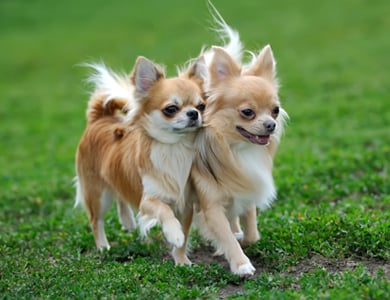
Energy level and temperament
Chihuahuas enjoy running and playing. They can generally get enough exercise in a very limited space. Simply following family members around is usually enough exercise for this happy breed. Short slow walks will help keep your dog healthy.
A Chihuahua’s behaviour depends largely on its genetics and the temperament of its parents and grandparents. However, as with all dogs, socialization and education play key roles. Often victims of small dog syndrome, according to which owners may not feel the need to follow the same type of training and socialization as with big dogs, poorly socialized or frightened dogs can be easily provoked and can even bite. They are therefore generally less suitable for families with young children. The breed tends to be extremely loyal to one person and in some cases may become overly protective of that person, especially around other people or animals. Despite this, Chihuahuas are easy, friendly and affectionate dogs that will add liveliness to your home. Although they normally get along better with other Chihuahuas, if they are well socialized they have no problem interacting with other animals, even big dogs.
Chihuahuas are small dogs that are very alert and highly intelligent. They are eager to please their owners and respond well to positive training. These tiny dogs seem very aware of their cute side and quickly learn to use it. From early one, you have to be clear that you make the decisions. It is important to remember that a Chihuahua should not spend most of its time in your arms or in a stroller. This could make the dog anxious and possibly lead to behavioural problems.
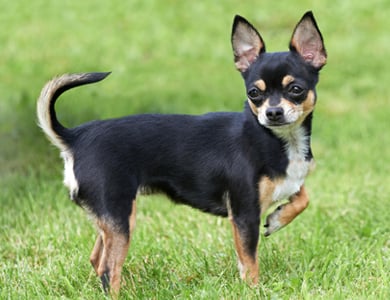
Maintenance of the Chihuahua
Chihuahuas require minimal grooming. They shed lightly year round, but weekly brushing with a rubber brush for shorthaired dogs and a comb or pin brush for longhaired dogs is generally enough to remove dead hair before it gathers on your floor. As with all breeds, Chihuahuas need to have their nails clipped regularly.
They also generally only require bathing if they get dirty while playing. Some Chihuahuas tear excessively, which may cause tear stains under the eyes. It is recommended that the fur be wiped to avoid brown stains. Supplements can also be added to the dog’s food to change the pH of the tears.
Origins of the breed
The Chihuahua has a complex history, and a number of theories speculate as to the origins of the breed. Folklore and archeological discoveries indicate that these dogs originated in Mexico, more specifically in the Mexican state of Chihuahua, hence the name. The most popular theory is that Chihuahuas descended from the techichi, a companion dog that was favoured by the Toltec civilization in Mexico. A number of engraved stones found in Mexico attest to the presence of canids strongly resembling the Chihuahua during the Toltec and Aztec civilizations. The earliest of these were discovered at Tres Zapotes, in Veracruz, Mexico, and date back to 100 AD, evidence that a Chihuahua-type breed was in Mexico over 1400 years before the arrival of the first Europeans.
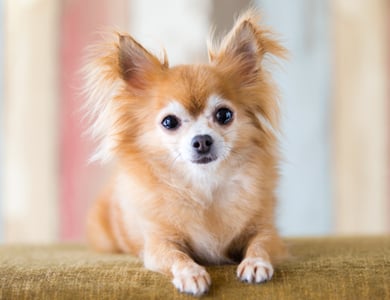
In a 1520 letter, Hernán Cortés, the Spanish conquistador who led the expedition that caused the collapse of the Aztec Empire and resulted in a large part of modern mainland Mexico falling under the rule of the King of Castile in the early 17th century, wrote that the Aztecs were raising and selling the little dogs as food. Other small dogs like Chihuahuas were also used as living hot water bottles during illness or injury. Some believe that this practice is where the idea of pain being transferred from humans to animals originated.
Chihuahuas as we know them today remained a rarity until the early 20th century. It was only in 1904 that the American Kennel Club registered the Chihuahua as purebred. The Canadian Kennel Club waited until 1928 to register the breed.
For more information, contact a registered breeder at the Canadian Kennel Club, who can answer all your questions. You can also contact the organization for information on breeders and the various breed clubs in Quebec and elsewhere in Canada.


